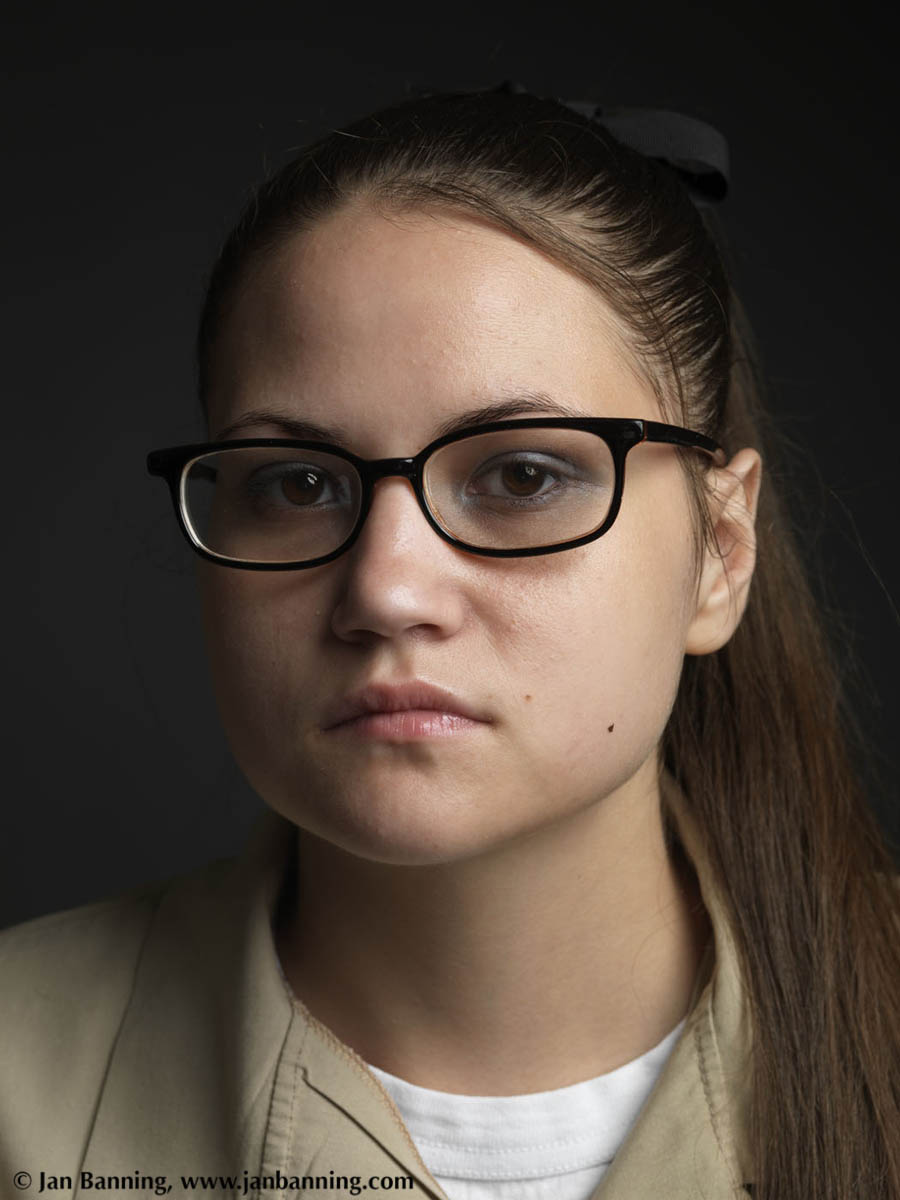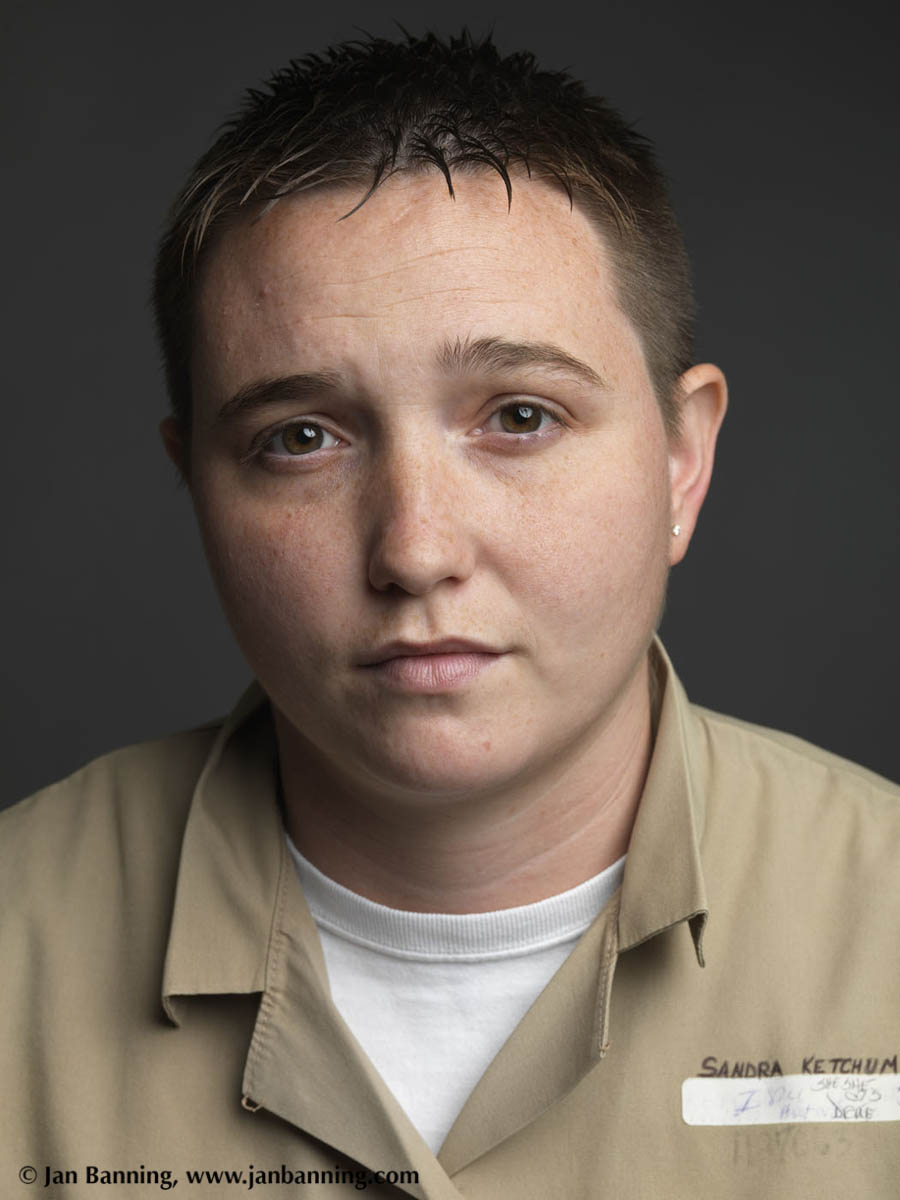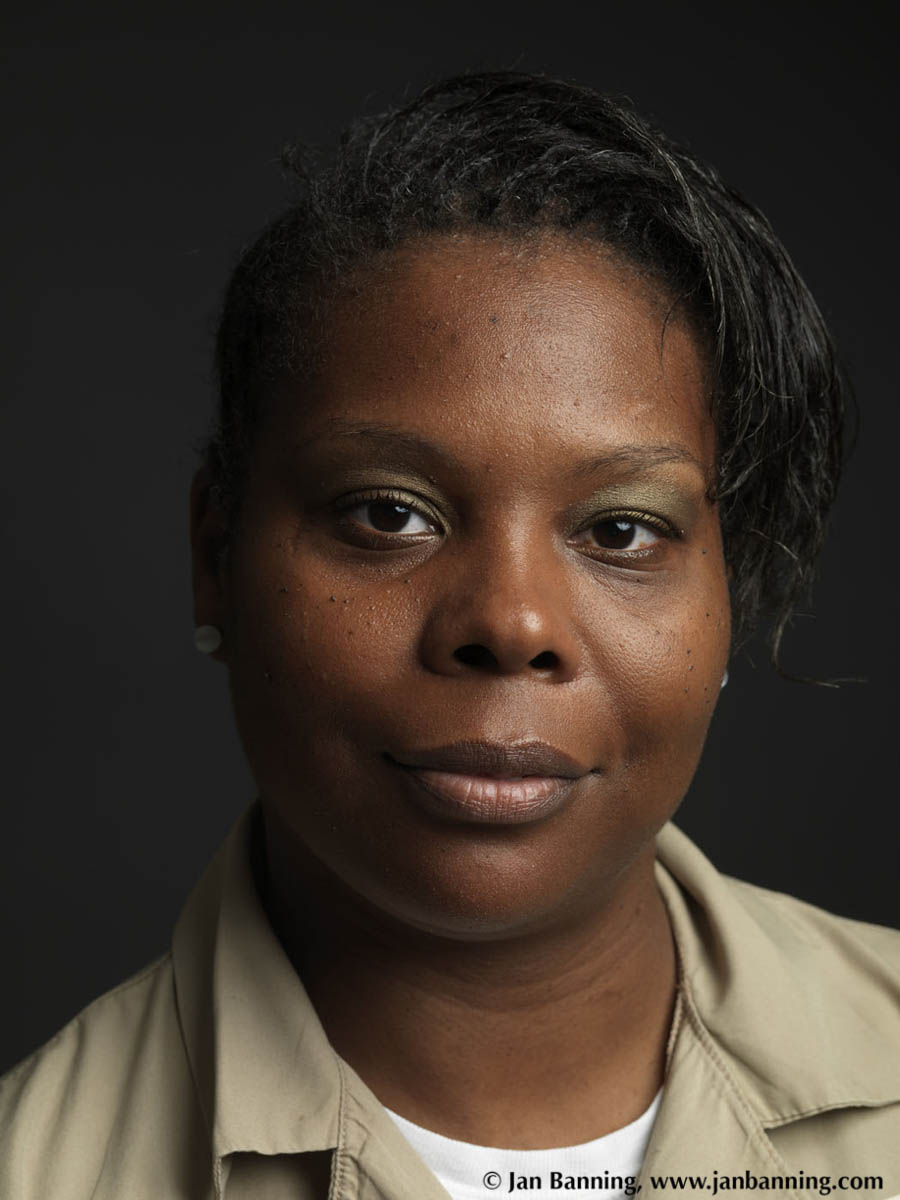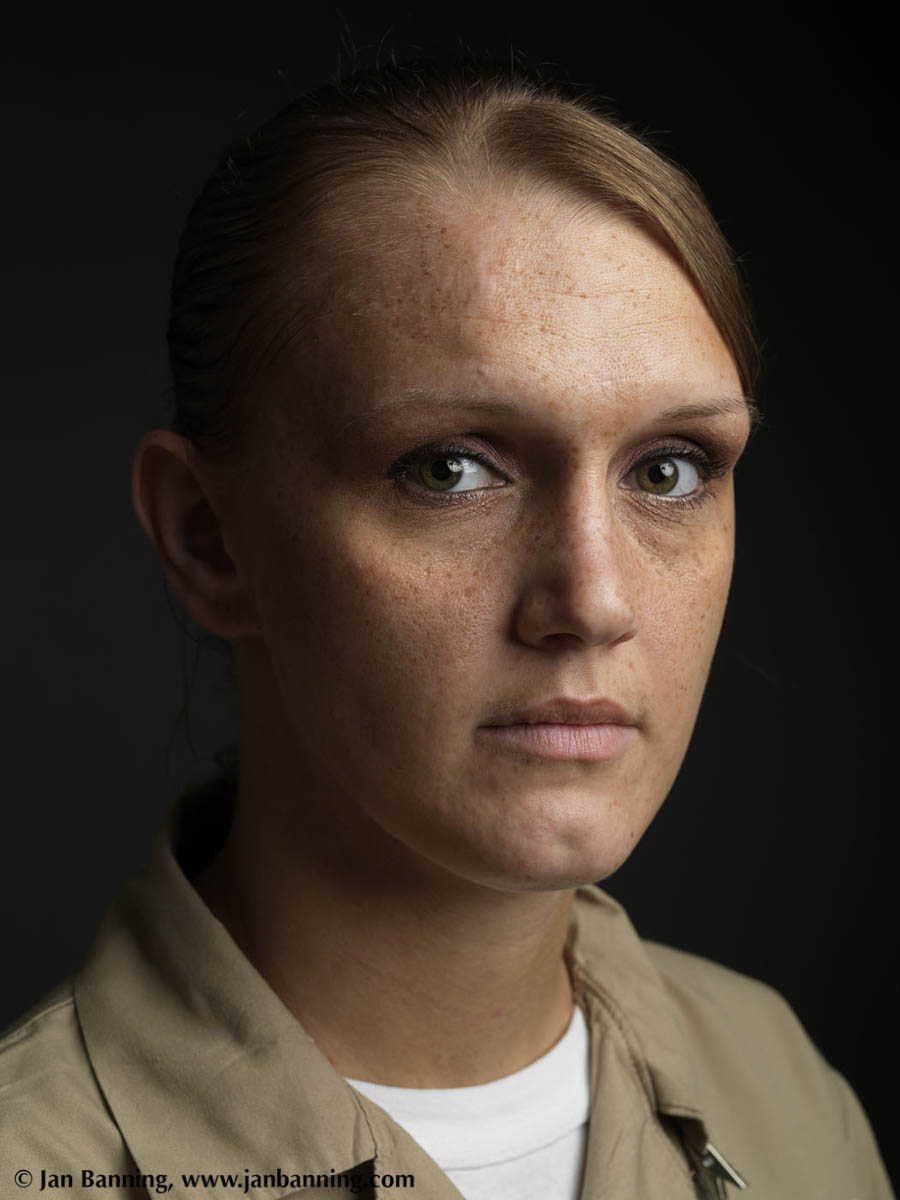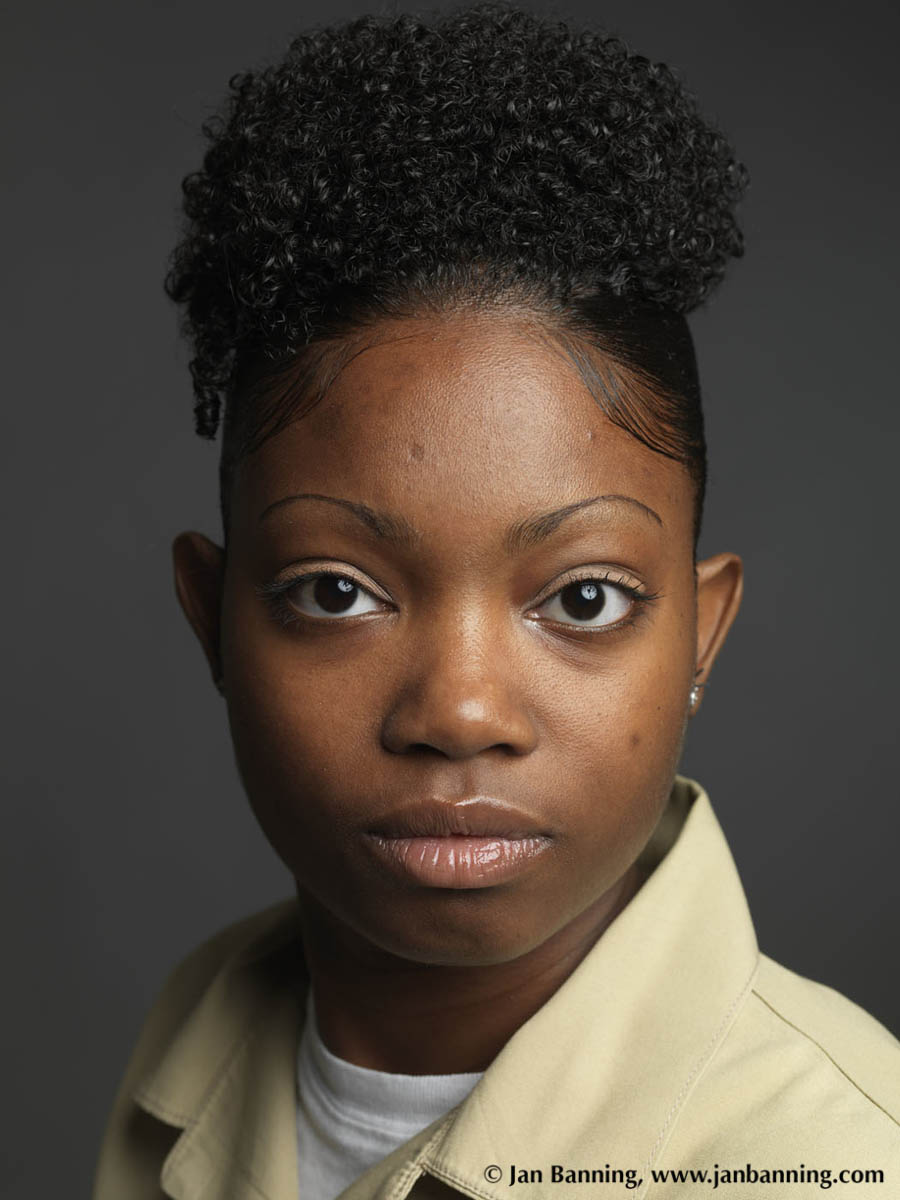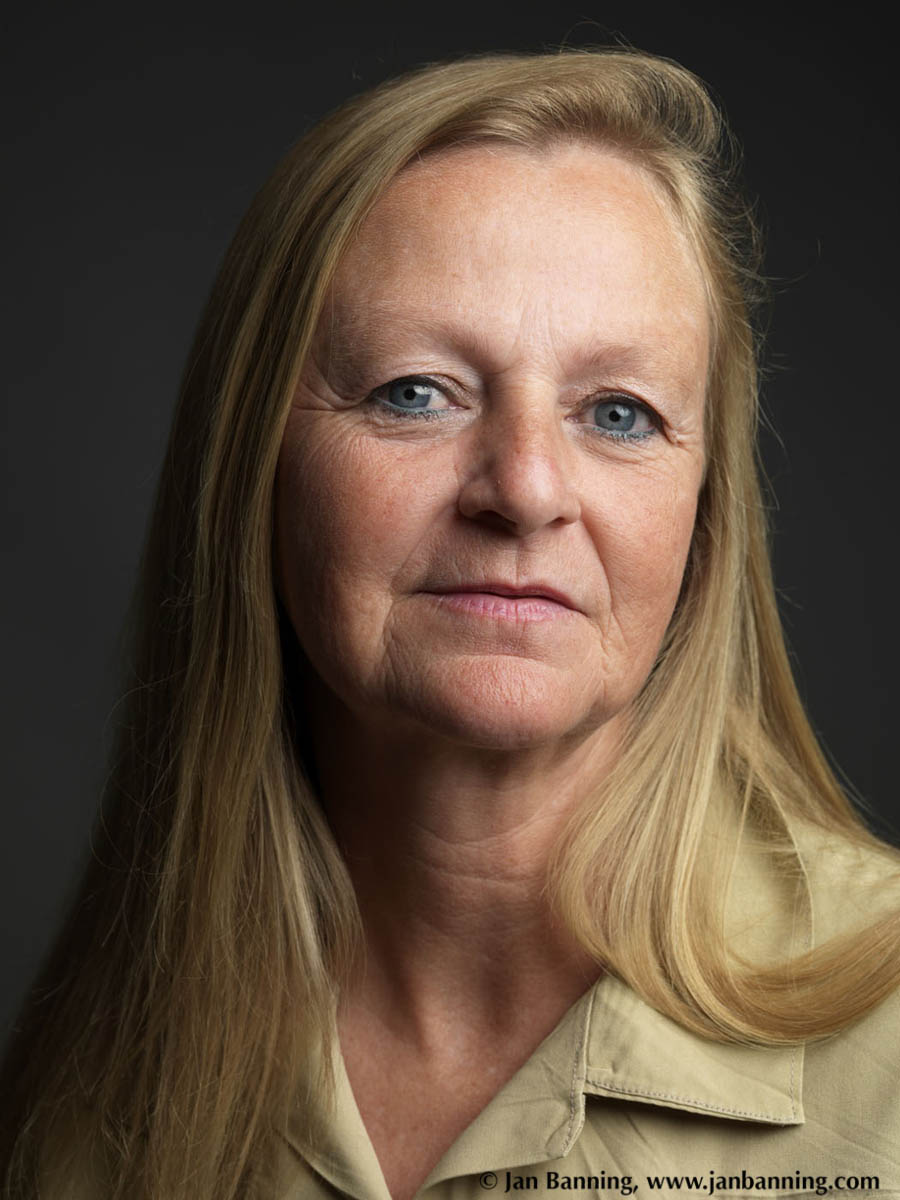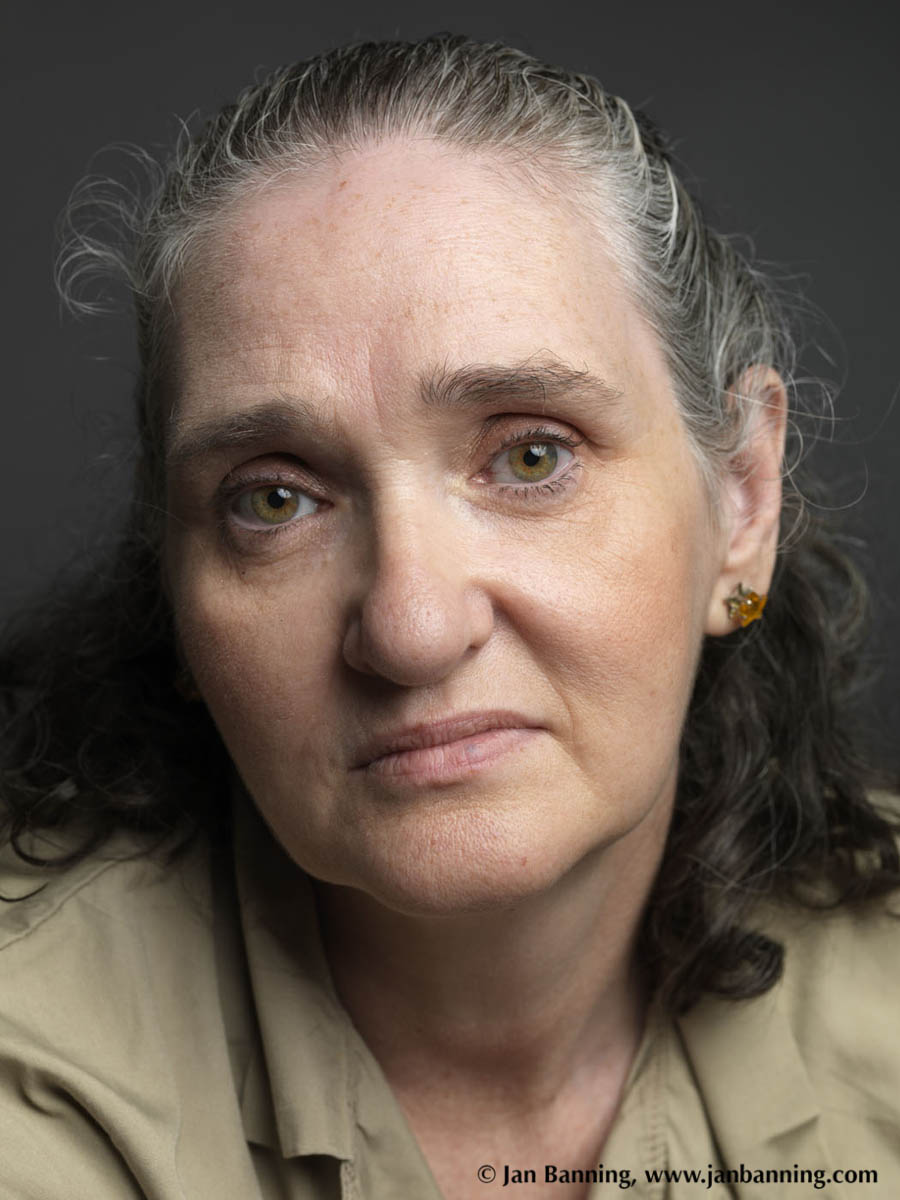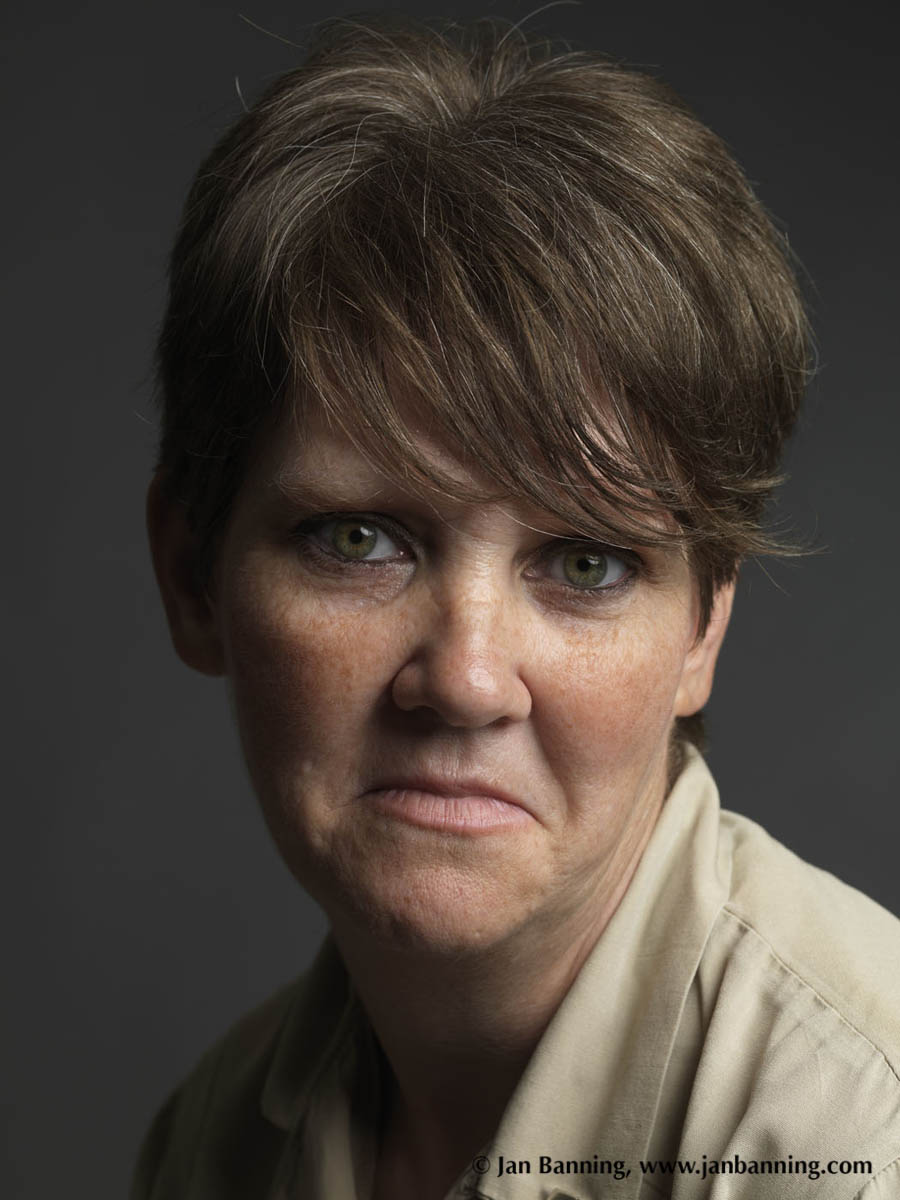In juni 2013 kreeg Jan Banning toestemming om drie dagen lang te fotograferen in de vrouwengevangenis Pulaski State Prison. ‘Telkens als een van de dames de studio binnenkwam, stelde ik me voor, schudde haar de hand, keek haar in de ogen en herhaalde haar naam. Dan nodigde ik haar uit om voor de camera plaats te nemen. Na afloop van elke portretsessie namen we handenschuddend afscheid. Verschillende vrouwen barstten daarbij in tranen uit: ze waren zulke basale menselijke gestes finaal ontwend.’
Behalve naar hun naam mocht Jan Banning van het Department of Corrections vragen naar leeftijd, datum van arrestatie, en lengte van de straf. Velen hadden vijf, tien of twintig jaar. Een forse groep had levenslang, al dan niet met de mogelijkheid van parole (voorwaardelijke invrijheidstelling). Het misdrijf zelf was verboden gespreksstof. Daarover kwam hij pas achteraf via internet te weten.
links
- BLOG JOHN ADAMS INSTITUTE (BY JAN BANNING)
- NEDERLANDS FOTOMUSEUM
- PODCAST JAN & CHRISTINA (BY KATINKA BAEHR)
- NRC. FOTOGRAAF JAN BANNING VERBEELDT DE DROMEN VAN EEN (ONSCHULDIGE?) AMERIKAANSE GEVANGENE (BY RIANNE VAN DIJCK)
- PAROOL. FOTOGRAAF JAN BANNING HOOPT MET FOTOBOEK OP RECHTVAARDIGHEID VOOR AMERIKAANSE CHRISTINA BOYER (BY KEES KEIJER)
- NOOIT MEER SLAPEN (VPRO RADIO, MARCH 5, 2022)
- PHOTONEWS. CROWDFUNDING JAN BANNING: FÜR DIE FREILASSUNG VON CHRISTINA BOYER





